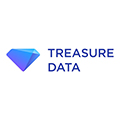Making data work by delivering relevant content to HCPs

Healthcare providers (HCPs) are facing a digital deluge and successive studies reveal that most messaging gets lost in the flood. The torrent of ill-directed communication and ill-conceived content is heightening levels of dissatisfaction with pharmaceutical companies that focus on product promotion rather than knowledge sharing. Digital has swept in paradigm shifts in engagement between industry and the healthcare front-line and it is clear that HCPs are demanding, and expecting, information that will help them provide better care for their patients. It is an environment of jeopardy if communications are slanted towards commercial sampling, discounting and sales. But it is also a time of great opportunity where organisations can provide relevant content. Recent research showed that, although HCPs were investing more time interacting with digital content, 70% felt that pharma representatives did not fully understand their requirements. A further 62% of HCPs said the most constructive approach from pharma representatives is to understand their needs and share only relevant and insightful content. The value of delivering precision-guided content was also underscored in the study which showed that 62% of HCPs feel overwhelmed by product-related promotional content pushed across the various digital channels. The challenge is to connect with HCPs with the right information, delivered on the right channel at the right time. “HCPs are human too and their time is precious so they will not engage with content that does not apply directly to them and their patients. They know the content is out there so it is pharma’s job to deliver it,” says Thomas Kurian, head of new markets at enterprise customer data management leader Treasure Data, whose award-winning Enterprise Customer Data Platform unifies customer data across silos at scale. “It is imperative that pharma organisations are very precise in the commercial applications of their drugs which will have taken more than a decade and $1 billion to develop. They only have a short time to harvest a return on investment so cannot afford to misfire when communicating with HCPs. “Most of the studies I’ve seen show that the majority of HCPs are unhappy with the digital content they are served up because it is drug centred and not precise. They want to know how to provide better care and or more affordable care for their patient population. “HCPs are very important influencers, both with patients and their peer groups, so you need to make sure you are providing them with the content they need. Failing to do that could mean a loss of revenue and, even worse, a dent in brand reputation.” Precision and Suppression HCPs have to battle through the noise of communications rushing their way and can experience digital fatigue wading through waves of content. A study by Indegene, which examined around 8 million emails from 15 email therapy campaigns between April 2020 and August 2021 found that HCPs responded better when the engagement was relevant and spaced out rather than a persistent in-box presence. It also reported that 70% of doctors surveyed felt pharmaceutical companies failed to understand their needs and expectations and that 62% felt overwhelmed by promotional content. Precision marketing has never been more important and Treasure Data has reported that the use of suppression tools and techniques can lead to streamlined and pinpoint marketing. “Engagements should be very crisp and precise and pharma teams have to deliver against these needs to get the best results,” says Kurian. “The content should also be shareable with an HCPs care ecosystem such as nurse practitioner, physician's assistant and pharmacists to get the best results for patients. At the moment, there are lots of broken links and lots of areas where precision in digital can be improved and boost the results of therapy commercialisation.” Suppression is critical and necessary to maximise precision in marketing to HCPs. Its foundations are consent management, enterprise security and privacy with time-based engagement options – to synchronise with HCPs who are available at different times of the day – built on. Content affinity AI models extract metadata from content that an HCP has engaged with and assigns keywords plus content affinity to each HCP profile. Natural Language Processing and the affinity metrics can be used to train and optimise the model further, enabling pharmaceutical marketers to engage with HCPs with content that is contextual and relevant. “This can be structured to whatever stage of the funnel the HCP is in at the time so we are delivering spot-on information at a time when it is most welcome,” adds Kurian. “Increasing engagement will not drive results but suppression can by defining what frequency individual HCPs are contacted and capping the number of engagements. Adding guardrails ensures the monitoring of email frequency and other digital approaches so that all engagements are timely and do not overload the HCP. “This helps nudge HCPs to digital conversations with conversational AI powered chat to learn what is more precisely necessary for the HCP to move down the prescription funnel. “If the HCP is more engaged with a specific drug and the brand because the information is relevant to their patients and has been delivered in a timely fashion then they become more engaged with their patients. Patients then become more engaged, and that results in better adherence which, in turn, leads to uplift in revenue. Our customers are seeing up to 6% uplift within a year with the execution of suppression tactics with precise marketing and Treasure Data customer data platform for marketing. “It is precision marketing in practice.” Consent, privacy and enterprise-class security function together with the suppression tools to act as guard rails ensuring all engagement is safe and compliant. Approaches are then flexed to HCP needs with intelligence-driven frequency capping of communications to ensure the relationship is not overburdened and stays positive. “There is a creative tension between pharma companies which are looking to maximise the broad potential of digital channels, and HCPs who are seeking relevant content that informs them very precisely how to provide better care and often more affordable care for their patient population,” adds Kurian. “Limiting contacts to specific intervals is a suppression tactic but that needs to be applied with the right tools enabling you to connect with an HCP at the different stages of the funnel which may require different frequencies of engagement. For instance, when they are foraging for information there is less contact compared to when they are actively prescribing at which time the frequency can be programmatically increased.” Kurian also believes that benefits radiate out from a well-handled connection with an HCP, a factor that will be critical as pharma recalibrates its engagement approach to more meaningful digital engagement. “Getting it right results in more trust in the pharma brand, which is why precise marketing is needed. The HCP is more open to meetings with commercial teams. They show more interest in registering for events to learn more and are more likely to engage with key opinion leaders and spread the word from peer to peer,” he adds. Pharmaceutical engagement with HCPs has emerged from the pandemic with greater acceptance of digital engagements but it has also elevated expectations of its digital capabilities. The personal service and recommended content delivered by consumer brands from Apple to Netflix illuminated a pathway of expectations. Suppression and security Suppression techniques have the capability of refining approaches by adding precision and confidence to consent management, time and topic-based engagement and monitoring email bounce. Alerts and notifications, follow-up calls and diary invites are productive tools - but only when they are applied to a defined need. If not, they can be digital irritants. “An important element of any data or digital exchange is trust and that comes from consent, privacy and security,” says Kurian. “Customers, in this case HCPs, want personalised attention but they also want to understand what’s happening with their data and to know it is safely managed by the pharma company’s customer data platform. “Treasure Data has category-leading consent, privacy and security which supports our customers’ use of our enterprise customer data platform products so that pharmaceutical companies can maximise their return on investment and HCPs can make connections with the information and knowledge they need to care for their patients.” About the interviewee Thomas  (TK) currently heads New Markets at Treasure Data, reporting to the CEO. He is responsible for leading the company’s growth in new markets by creating new products to serve additional enterprise functions, including Marketing, Customer Service and Sales, with a focus on the Life Sciences industry. About Treasure Data
(TK) currently heads New Markets at Treasure Data, reporting to the CEO. He is responsible for leading the company’s growth in new markets by creating new products to serve additional enterprise functions, including Marketing, Customer Service and Sales, with a focus on the Life Sciences industry. About Treasure Data  Treasure Data is a best-of-breed enterprise customer data platform (CDP) that powers the entire business to shape customer-centricity in the age of the digital customer. We do this by connecting all data into one smart customer data platform, uniting teams and systems to power purposeful engagements that drive value and protect privacy for every customer, every time. Treasure Data is trusted by leading companies around the world, with companies spanning the Fortune 500 and Global 2000 enterprises. To learn more, visit www.treasuredata.com.
Treasure Data is a best-of-breed enterprise customer data platform (CDP) that powers the entire business to shape customer-centricity in the age of the digital customer. We do this by connecting all data into one smart customer data platform, uniting teams and systems to power purposeful engagements that drive value and protect privacy for every customer, every time. Treasure Data is trusted by leading companies around the world, with companies spanning the Fortune 500 and Global 2000 enterprises. To learn more, visit www.treasuredata.com.











